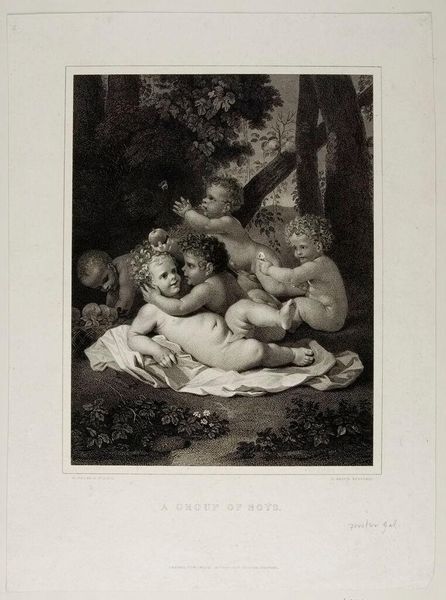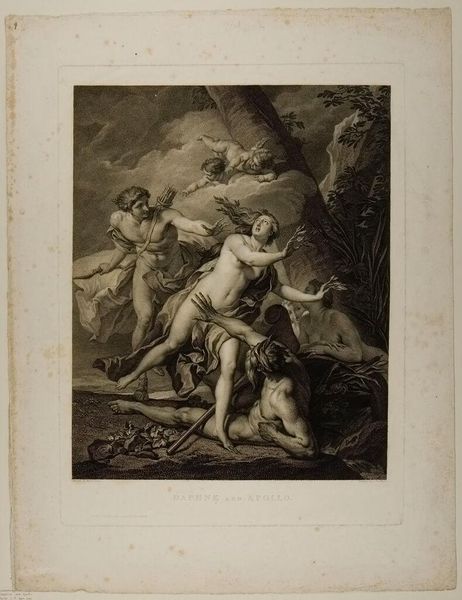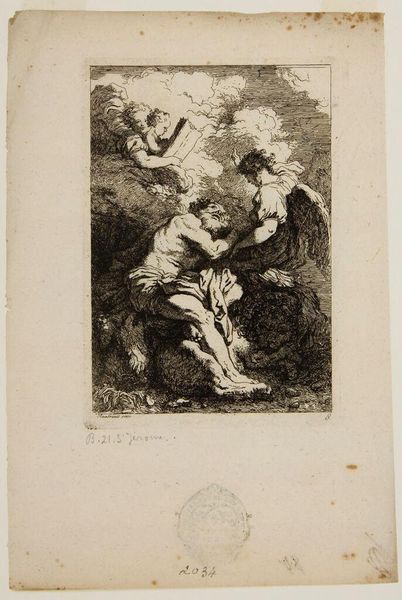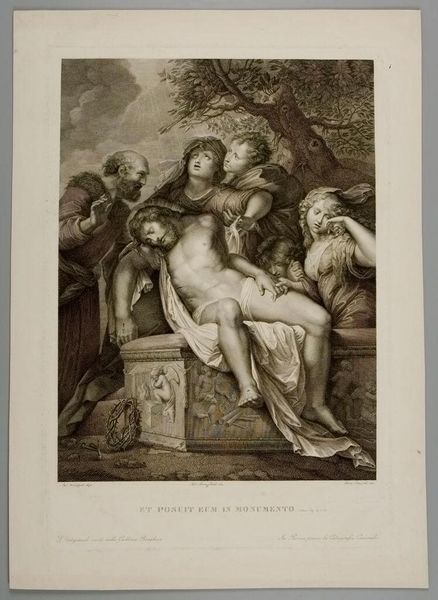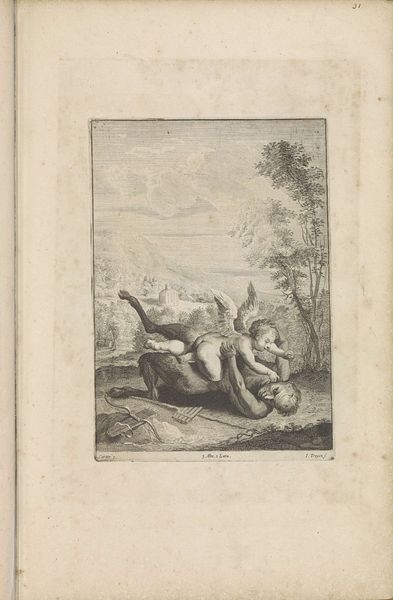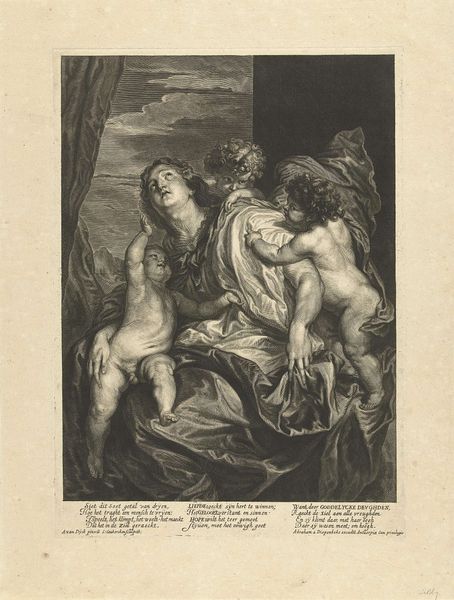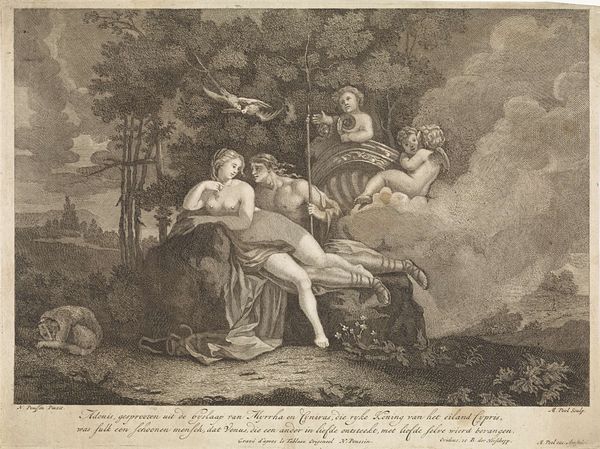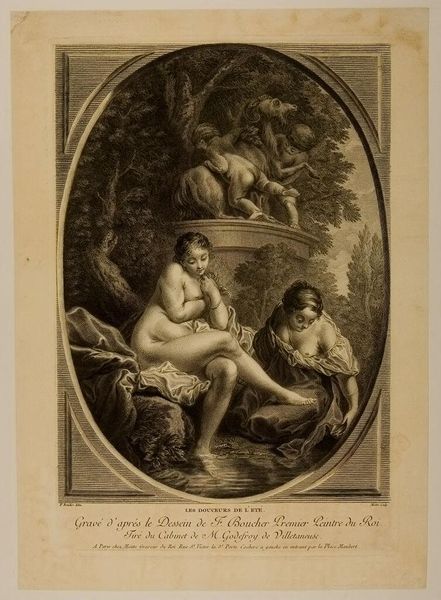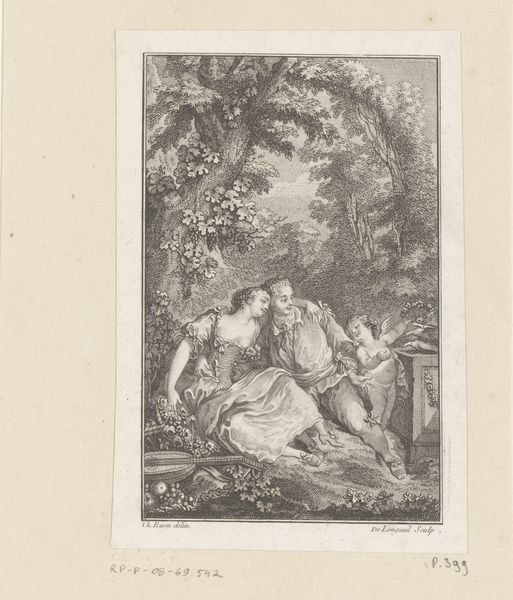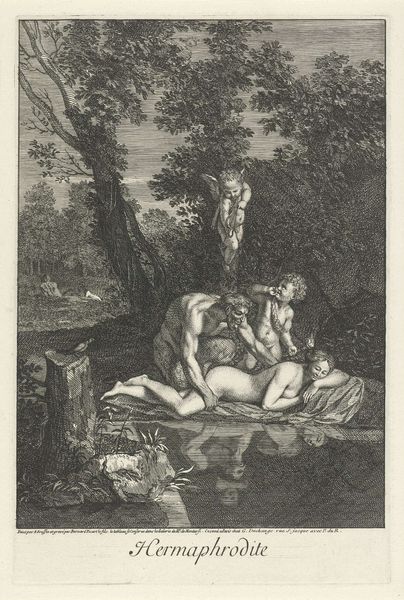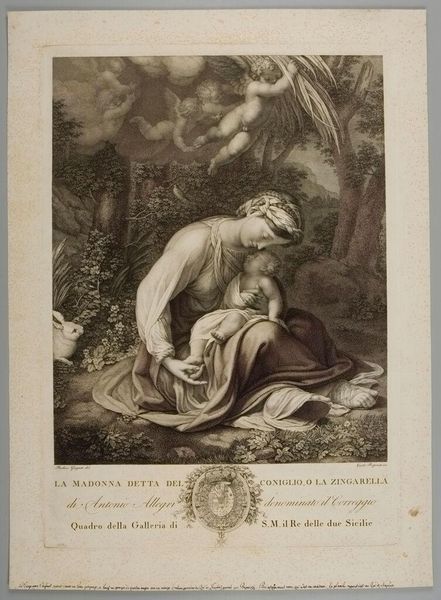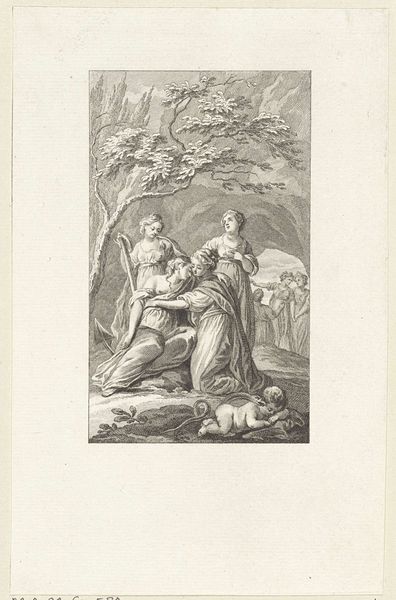
Copyright: CC0 1.0
Editor: This is Joseph Wagner’s "Christ Child Sleeping." I’m struck by the contrast between the peaceful scene and the symbols of Christ's future suffering, such as the crown of thorns. What is the significance of portraying Jesus in this way? Curator: It’s a fascinating juxtaposition. Consider the context: 18th-century religious imagery often served didactic purposes. How does this seemingly innocent scene, laden with symbolism, function within the broader political landscape of religious art? Editor: Do you think this image would have been accessible to all social classes? Curator: That's a critical question. Printmaking made art more widely available, but the complex iconography might have been primarily understood by the educated elite. What do you think the average person might have taken away from this image? Editor: I guess it's a good reminder that art always exists within specific social and political structures. Curator: Precisely. This piece isn't just a devotional image; it’s a product of its time, reflecting the power dynamics and cultural values of 18th-century society.
Comments
No comments
Be the first to comment and join the conversation on the ultimate creative platform.
